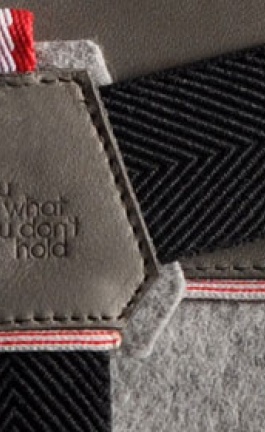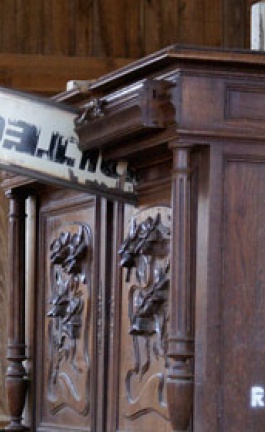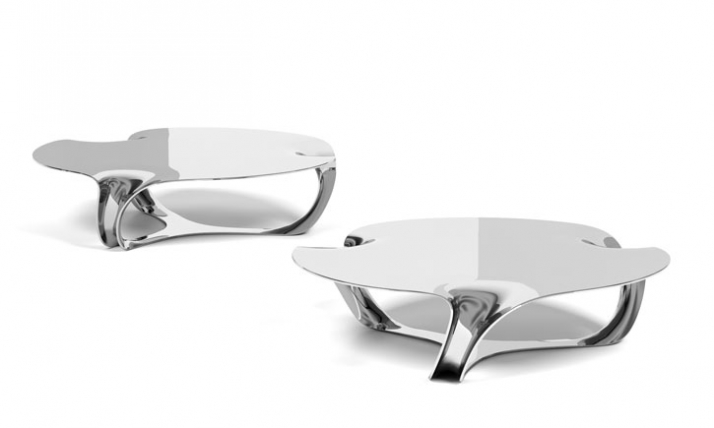
flow side table, 2009, © Timothy Schreiber
Timothy Schreiber is one of those designers that doesn’t leave anyone indifferent with his work. Born in Germany and currently dividing his time between London, Sydney and the rest of the world, Schreiber has captivated a lot of people with his creations and the innovative processes he follows. Inspired by nature and experimenting constantly with the latest technology inventions, he brings a breeze of fresh air to the world design scene. Some say that his designs possess certain sexiness and others focus on their organic forms that seem to ask for a caress. His pieces combine comfort with functionality and imagination with cutting edge design and have gained him already two red dot awards. Yatzer approached him for an exclusive interview and he kindly answered us from an airport lounge just before one of his regular trips. So, our beloved readers, fasten up your seat belts and get ready to fly!
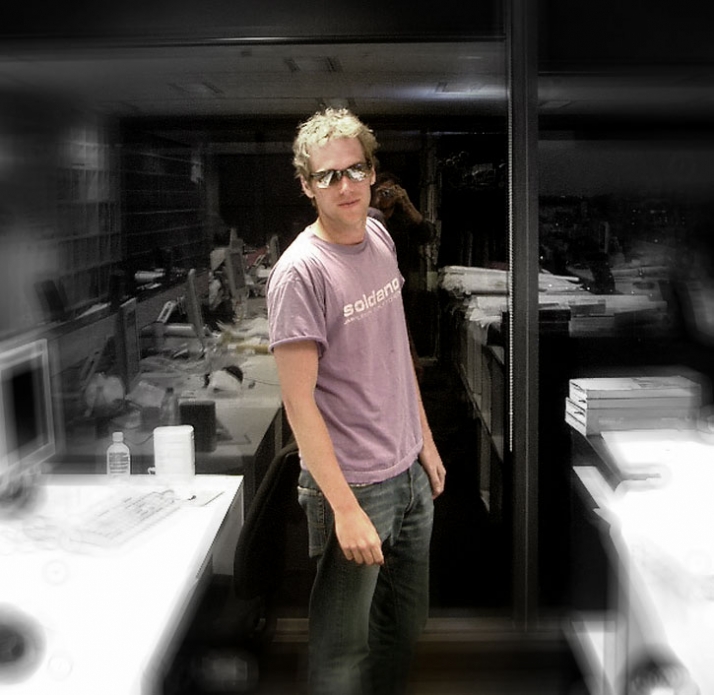
Timothy Schreiber
Well, Timothy, how did your adventure start?
Being also an Architect I was fortunate to work on a variety of different projects throughout the world for the past 10 years. After High school and before I started my architectural studies I was first trained in traditional cabinet making in Germany. Then while I was studying architecture I worked as a cabinet maker in California in the USA during the university breaks. That was my first work experience abroad and incredibly exciting. I was working on very large shop fit outs for major retailers in the US and as a cabinet maker I was actually working in the work shop on the actual manufacturing of the joinery. The experience I gained during that time was invaluable for my further career. After I completed my studies I started to work as an Architect in Australia and through this I was lucky to get involved in the Aquatic centre for the Olympic Games in Beijing, where I lived and worked in 2003/2004. This for me completely different and new environment was another invaluable experience, which resulted in another extremely creative phase in my recent career. Just before Christmas last year I was lucky to spent 3 moths for a project in Tokyo, which was another highlight of inspiration and experience. I believe that I am still at the very beginning of a great “adventure” and I am looking forward to new upcoming opportunities in new inspiring locations on this earth.

flow side table, 2009, © Timothy Schreiber
Many of your creations have organic forms. Furthermore, creations like the morphogenesis chaise hide behind them an intensive research process of natural structural systems and micro structures. What is the role of nature in your work and from where else you get inspired?
Over the years I have realized that anything that surrounds us can be inspiring, but it is a matter of one's viewpoint and a trained eye. For example in the country or surrounding that someone has grown up in or lived in for a very long time, the senses tend to get lazy regarding inspiration by everyday objects. However, if you constantly chance your living and work environment (which I have been trying to do for the past 10 years) it helps your eyes and brain to look at things from a different viewpoint and you start rethinking familiar phenomenons. Here is an example: A standard soft drink can. I have probably had thousands in my life, but I never really looked at their very essence while I was in Germany. However, when I first came to the USA and then Australia, Korea, China, Japan I noticed subtle differences in their design. Some are just bigger or smaller than others, but some have slightly different shapes and details which might make them more comfortable to carry or store them. Some slight alterations in shape might enable the design to use thinner metal and therefore make the can lighter. Some are made from 3 parts, some from 2 and the mouth varies, too, providing for a different drinking experience. After some research I realized that there are thousands of patents have gone into the design of those cans since their invention. I am still fascinated by them now, every time I have one in my hands.
This is just one example, how a simple everyday object can be very inspiring to me and there are billions of others that surround us and can be equally inspiring, if you look at them in the right way.
Of course, in regards to my more organic forms I found a lot of inspiration in natural phenomenons, mainly though the study of microscopic cell structures.

Pan 07 chairs, 2006, © Timothy Schreiber
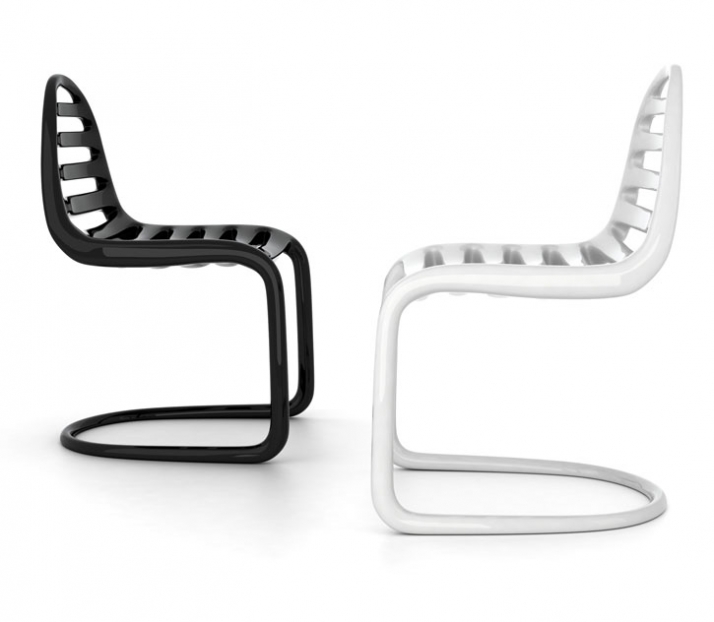
Pan O7 chairs, 2006, © Timothy Schreiber

Zero G table, 2006, © Timothy Schreiber
Tell us more about your experimentations with materials like carbon nano tubes for your zero_ g table. Which are their advantages?
Zero G Table was a great conceptual experiment. I was studying various microstructures for about 2 years before, while I was working on my Pan_07 chair which also won a red dot design award in 2006. Through this research I discovered the carbon nanotubes, a material which is used for tennis rackets. It is a very fascinating material that combines extreme strength with extremely low weight.
You mention that contemporary rapid manufacturing technology opens the gate to new concepts that were previously unmanufacturable. Which is the role of new technology to your work and in which way it affects the designing process?
Also being an architect, I am used to investigating in new technologies and techniques as well as an interdisciplinary work flow. For the Pan_07 chair both of those concepts were applied. The internal microstucture was developed in collaboration with Sean Hanna and manufactured using SLS laser sintering technologies.

Jo 8 nesting tables, 2008, © Timothy Schreiber

Jo 8 nesting tables, 2008, © Timothy Schreiber
Which are your favourite designers? Which of them had the greatest influence in your work and why?
There are so many...Many of them are also architects. When I was a child I already had problems making up my mind which one my (only) favourite Pop band or movie was. I rather tend to identify myself with a few general directions of a particular topic, represented by not just one individual but a larger group of people. Regarding design and art, that would be everyone who tries to push the existing boundaries and is eager to create truly contextually contemporary, democratic and sustainable design. A list of those artists and designers would probably be endless so it is actually quicker to name the ones that are not so inspiring to me. This would be the group or direction which could probably best be generalized under something like “the new eclecticists”, people whose work is mainly a collage of existing or even historic elements.
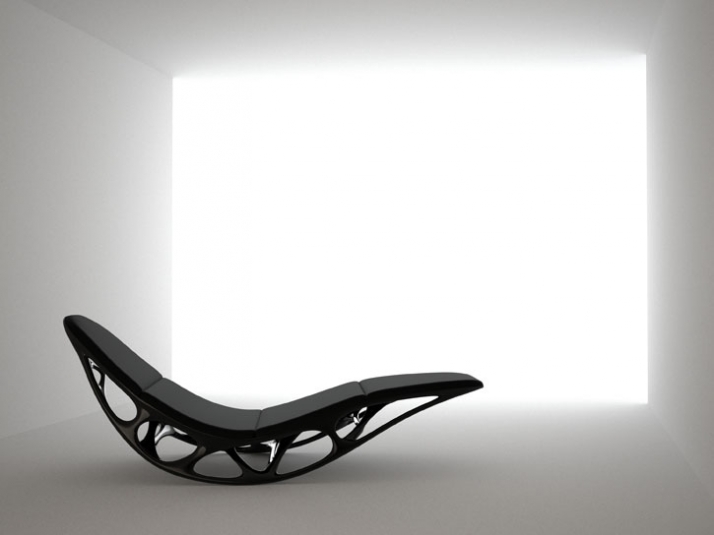
Morphogenesis chaise (RED DOT DESIGN AWARD 2008), © Timothy Schreiber

Morphogenesis chaise (RED DOT DESIGN AWARD 2008), © Timothy Schreiber
Which is the working process that you follow?
Every time I start on a new job I try to start completely from scratch aiming to create something completely new and unique. Of course that is not as easy as it sounds and I also believe that these days it is even more important than before to have a broad knowledge of of design history, because sometimes one might have a very good idea, but unfortunately someone else has had the same idea before already. For example a few years ago I saw this guy presenting this multi functional piece of upholstery at the salone satellite in Milan. You could sit on it, turn it around and lie on it or turn it again and sit on it in a different position. A very good idea, however it was virtually identical with Verner Panton's "Phantom chair". So I guess, he might have had a good idea, but these days that can only be the beginning of a very long process of design refinement. Starting with a good idea and taking everything into account which has been done before regarding this line of thought, I try to let the design evolve in a very long process of many iterations of try and error to hopefully archive an end result which is truly unique. There are thousands of new designs in this word every day and is just logic that not every single one of them can be a complete revolution. However, the better ones start with a good idea and were subsequently meticulously refined regarding the overall concept and detail, so they stand out against others which started with the same idea. I'll give you an example from the realm of fashion: Here in London the (especially female) fashion changes every season. What is in fashion this year is completely out of fashion next year. One year the "designers" dictate wearing flat pink shoes and the next year back plateau shoes with straps all over are in style. The direction basically changes by 180 degrees every few months and the trends are actually completely random. Pursuing this approach, truly good design can never evolve. In contrary to this way of working, I believe in a more sequential design approach which is based on previously gained results and knowledge. The direction should not change completely every year and a lot more attention should be paid to refining the details of previously favoured solutions. I tend to work that way.

A_lounger chairs, 2006, © Timothy Schreiber
We are keen on the idea of recycling materials, just like you did with the re-used airplane aluminium for your a_lounger chairs. In which way ecological consciousness can foment creativity?
The idea of sustainability has been an integral concept to everyone's daily life in Germany, where I grew up since the early 80s and it was generally accepted by everyone. However, in the recent years the discussion has become very commercialised, especially in architecture. In many countries all of a sudden any building is being marketed as super sustainable and especially the term “carbon neutral” seems to be the most abused phrase to me these days. A lot of people seem to make a lot of money with making something carbon neutral on the paper. I personally prefer to avoid those heated and commercially driven discussions, while working on the real driving factors and details that make products more sustainable.
What are you currently working on and which are your plans for the future?
Most of that is confidential, so unfortunately others don't allow me to talk about it.

E_volve tables (RED DOT DESIGN AWARD 2007), © Timothy Schreiber

My chair, 2006, © Timothy Schreiber

X-lounger, 2002, © Timothy Schreiber





